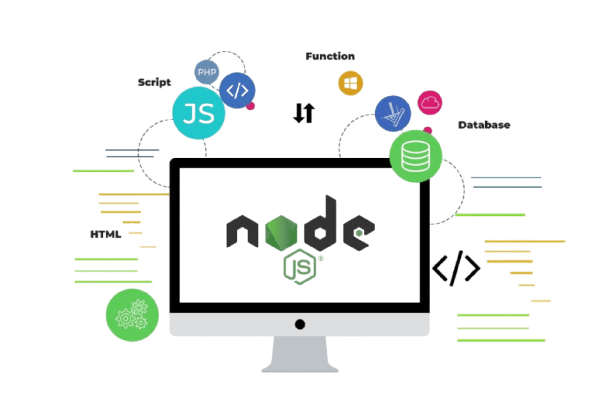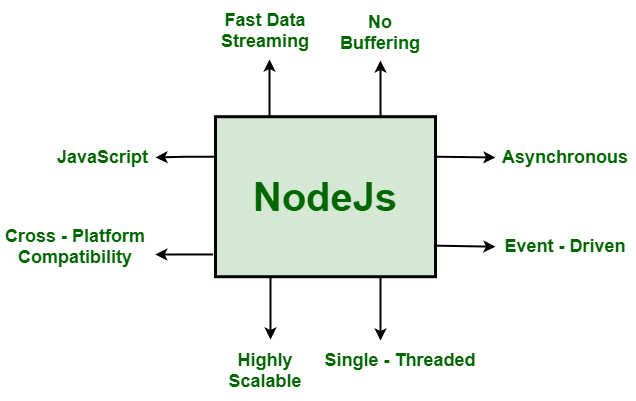
- Introduction to Angular and Node.js
- What is What is Angular?
- What is Node.js
- How Angular and Node.js Work Together
- Setting Up an Angular Node.js Application
- Benefits of Using Angular with Node.js
- Best Practices for Angular Node.js Integration
- Conclusion
Introduction to Angular and Node.js
Angular and Node.js are two powerful technologies widely used in web development. Angular is a front-end framework, while Node.js is a runtime environment for JavaScript on the server side. Both technologies are built using JavaScript, which allows developers to use a single language for both the client-side and server-side components of a web application. In this article, we will explore both Angular and Node.js individually, how they work together, and how they can be used in tandem to create full-stack applications.
Ready to Pursue Your Web Developer Certificate? View The Web Developer Course Offered By ACTE Right Now!
What is Angular?
Angular is an open-source framework for building dynamic web applications. Developed and maintained by Google, It uses TypeScript, a superset of JavaScript, to provide static typing and advanced features for large-scale applications. Angular is widely used for building Single-Page Applications (SPAs), where the page doesn’t reload but rather dynamically updates based on user interaction—making it a key focus in modern Web Developer Training.
Key Features of Angular:
- Two-way Data Binding: Angular allows automatic data synchronization between the model (JavaScript) and view (HTML), reducing the need for manual DOM manipulation.
- Component-Based Architecture: Angular applications are built using components, which help structure the application into reusable and manageable pieces.
- Dependency Injection: Angular promotes loose coupling by using dependency injection to manage services and components, improving testability and modularity.
- Routing: Angular has an integrated router that helps users navigate between different views in a Single-Page Application (SPA).
- RxJS: Angular leverages the RxJS library to handle asynchronous operations using Observables.
Due to its rich features and scalable architecture, Angular is an ideal choice for building complex, large-scale, and performance-oriented applications.
What is Node.js?
Node.js is an open-source, event-driven JavaScript runtime environment built on Chrome’s V8 JavaScript engine. Unlike traditional server-side technologies, Node.js allows JavaScript to be executed outside the browser, which makes it ideal for building scalable network applications like real-time chat applications, APIs, and Microservices.
Key Features of Node.js:- Non-blocking I/O: Node.js uses asynchronous, event-driven architecture to handle multiple requests simultaneously without waiting for previous tasks to complete. This leads to high concurrency and better performance.
- Single-threaded Model: While Node.js runs in a single thread, it can handle many concurrent operations using asynchronous I/O calls, which makes it suitable for I/O-heavy tasks.
- npm (Node Package Manager): Node.js comes with npm, a package manager that helps developers manage libraries and dependencies, making development faster and easier.
- Cross-platform: Node.js is cross-platform, meaning it can run on different operating systems, such as Linux, macOS, and Windows.

Node.js is typically used to build back-end services and APIs, and its ability to handle many concurrent requests makes it an excellent choice for building scalable applications.
How Angular and Node.js Work Together
Angular and Node.js can work seamlessly together to create full-stack web applications. Angular is used for client-side (front-end framework) development, providing the user interface and experience. In contrast, Node.js is used for server-side (back-end) development, handling business logic, data processing, and database interactions.
Combining Angular and Node.js:
- Front-End and Back-End Integration: In a full-stack Angular and Node- js application, Angular sends HTTP requests to the Node.js server, which processes the request and returns data to the front end.
- RESTful APIs: Node.js can create RESTful APIs with which Angular communicates. These APIs expose endpoints for Angular to retrieve data, perform CRUD operations, and submit forms.
- Real-time Data: Node.js supports real-time communication using Web Sockets. For instance, Angular can interact with a Node.js server to update the UI in real time (like in a chat application).
The separation of concerns between Angular (front-end framework) and Node.js (back-end) allows for a modular architecture where both sides can evolve independently. This also provides the advantage of scalability, as the client and server can be optimized individually a key concept highlighted in Web Developer Training.
Thrilled to Achieve Your PMP Certification? View The Web Developer Certification course Offered By ACTE Right Now!
Setting Up an Angular Node.js Application
Setting up an Angular and Node.js application requires a few tools and steps:
Tools and Prerequisites:
Creating the Angular Project: To create an Angular project, run the following command in the terminal:
- ng new angular-node-app cd angular-node-app
Exploring Options for a Web Developer Master’s Degree? Enroll For Web Developer Master Course Today!
Setting Up Node.js Server: Set up a basic Express server in the server folder of the project:
- const express = require(‘express’);
- const app = express();
- const port = 3000;
- app.get(‘/api/data’, (req, res) => {
- res.json({ message: ‘Hello from Node.js server!’ });
- });
- app.listen(port, () => {
- console.log(`Server running on http://localhost:${port}`);
- });
Integrating Front-End and Back-End: In Angular, you can use the HttpClient module to send requests to the Node.js back-end. Set up a service to interact with the API created by Express.

Benefits of Using Angular with Node.js
There are numerous benefits to using Angular and Node.js together:
- Scalability: Both Angular and Node.js are designed to scale efficiently, making them ideal for building large applications that need to handle a high volume of users and data.
- Full JavaScript Stack: Since Angular and Node.js are written in Javascript , using the same language on both the client and server sides simplifies development.
- Fast Development: Angular’s modularity and Node.js’s asynchronous I/O significantly reduce development time, allowing for faster project completion.
- Unified Development Environment: Developers can use the same tools, libraries, and technologies throughout the development cycle.
Getting Ready for a Business Analyst Job Interview? Check Out Our Blog on Web Developer Interview Questions & Answer
Best Practices for Angular Node.js Integration
When integrating Angular with Node.js, it’s essential to follow best practices to ensure the application is robust, secure, and maintainable principles that are emphasized in comprehensive Web Designing Training.
- Modular Architecture: Organize your application using Angular components, services, and modules. Similarly, structure the Node.js server with clear API routes, middleware, and controllers.
- Security Considerations: Protect sensitive data by implementing authentication (JWT tokens or OAuth), data validation, and sanitization on both the client and server sides.
- Error Handling: Ensure proper error handling and logging mechanisms are in place to track and manage issues effectively.
- Performance Optimization: Use lazy loading in Angular to load only necessary components and optimize Node.js APIs to handle high traffic efficiently.
Conclusion
Angular and Node.js combine to form a powerful combination for building Full-stack Developer applications. Angular provides a rich front-end framework with features like two-way data binding, routing, and component-based architecture. Node.js, on the other hand, offers a high-performance server environment capable of handling numerous concurrent connections. Using both technologies allows developers to enjoy the benefits of a unified JavaScript ecosystem, faster development cycles, and improved scalability. Whether building a small web application or a large enterprise solution, Angular and Node.js are a reliable and efficient choice for full-stack development.


